|
Here at The Footcare Centre, Clonmel, we have a wealth of expert information to help you take care or your feet.
0 Comments
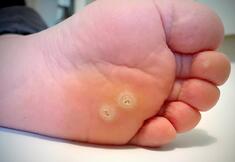 Don’t bring back an unwanted poolside virus, the dreaded Verruca. A verruca is a wart found on the soles of your foot and around the toes and is caused by a virus. Verruca can be contagious and transmitted through direct person-to-person contact. They tend to be more common in children, teenagers and young adults but they can reappear at any age. Most verruca disappear by themselves especially in young people. But if your verruca is painful, unsightly and bothering you, you may wish to treat them. The most commonly used treatments for verruca include paring to remove the surrounding hard skin, which causes the pain, and then the use of cryotherapy (freezing) or occlusal tape (zinc oxide or kinesiology) to provoke an immune response to attack the virus. How to avoid catching a verruca? Always wear footwear, flip flops or crocs, or swimming socks in communal areas like around the pool, in gyms, communal showers, changing rooms etc. If you do get a verruca, avoid touching or scratching it and never pick at them. Keep your feet clean and dry and see your foot health practitioner for further information on treatments. 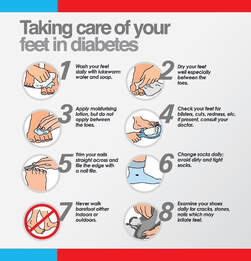 Do you know someone who suffers from Diabetes? Do they have regular foot care check-ups in accordance with best practice for people with Diabetes? Diabetes is a serious illness and if left uncontrolled, may cause nerve damage reducing the sensations in your feet. It may also reduce blood flow to the feet which inhibits the healing of wounds and can allow infection to be introduced. Good foot care guidelines would include
Having to alter the way you walk due to bad feet can also affect your other joints such as knees and hips and create pain in your lower back. See Andrea Keenan at The Foot Care Centre for diabetic foot checks and any foot issues you may have. Are you enjoying the sunshine and getting out in the fresh air – keeping in mind social isolating. Vitamin D, called the Sunshine Vitamin, is a unique vitamin that people just don’t get enough of, especially in Ireland. Spring/Summer are the best times to enjoy being outdoor and connecting with the healing power of nature. Vitamin D can also be taken as a supplement and occurs naturally in a few foods, including some fish, egg yolks and in fortified dairy and grain products. Vitamin D is an essential for strong bones, helping to prevent Osteoprosis, including in the foot and ankle; also helps your gut health by assisting the absorption of calcium and phosphorus – two minerals that are essential for maintaining strong and healthy bones; promoting skin cell growth, repair and can prevent premature aging; improves your mood, we smile more when the sun is shining. Deficiency in Vitamin D is associated with increased autoimmunity and susceptibility to infection – it helps keep our immune systems balanced during the cold and flu season, very important at this time and helps your body absorb calcium and promote bone growth. Some tips that will help you safely enjoy the sunlight:
As with everything, getting a healthy sun intake is a balancing act. 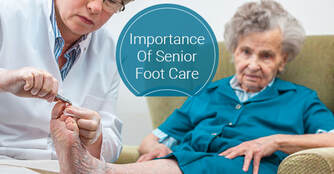 It is very important for Seniors to take proper care of their feet for lots of reasons as foot problems tend to occur as we age. Feet lose cushioning/footpad over time and the nails grow thick and brittle. Many Seniors experience reduced blood flow and this can delay healing of foot sores. Bony deformities such as bunions and hammer toes, toenail disorders and arthritis are very common foot problems in older people. Here are some Senior foot care tips for improved health and why foot care is important.
At The Foot Care Centre we can help you to alleviate any problem you may have and also sell specialised gentle grip socks for people suffering from Diabetes and Oedema and wider fitting shoes and boots to accommodate any issues such hammer toes and bunions. Recently I have been lucky enough to avail of some excellent online study during these extraordinary times. I have completed all sorts of topics from Dementia Care to Verruca to taking advantage of the training from the Local Enterprise Office for the Training Online Voucher, expertly bought to us by Noel Davidson of The Entrepreneurs Academy.
During his online training, Noel told us about Ivy Bean who at the grand young age of 102, became an internet sensation. Ivy Bean was on twitter @ivybean104 and each year she changed her tag to include her age. Ivy Bean died at the ripe old age of 104, Rest in Peace Ivy. Note to Noel, you now need to update your post! Social media is a fabulous tool for a small business like The Foot Care Centre. You can stretch your reach to a customer anywhere in the world, you just need the tools – an excellent website; good content and an e-commerce section to enable your customers to make sales, book appointments and contact you by email. And excellent training is key – if you are unable to access or utilise all the benefits of social and digital media – you are missing out and so are your customers. |
andrea
|
Location |
|


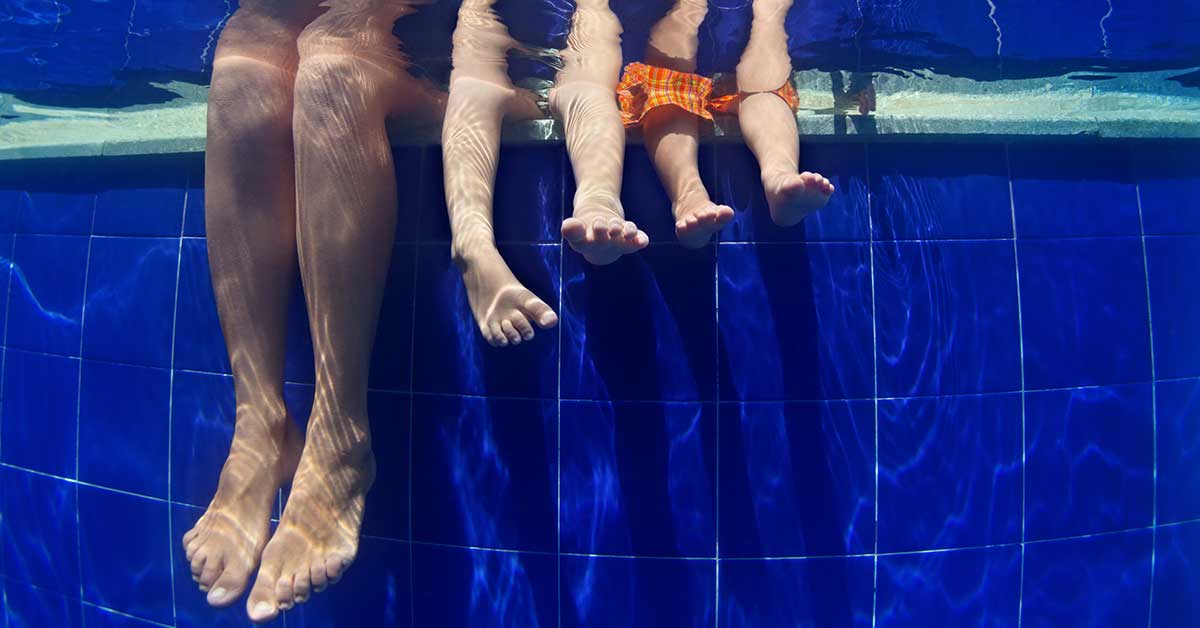
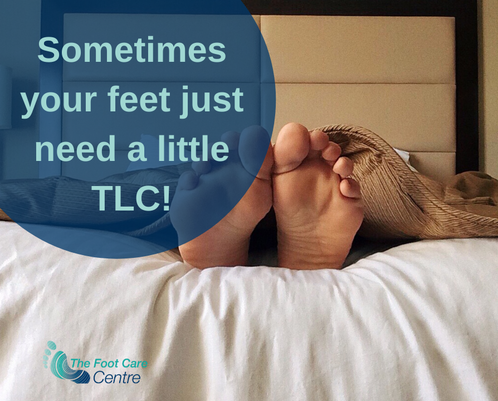




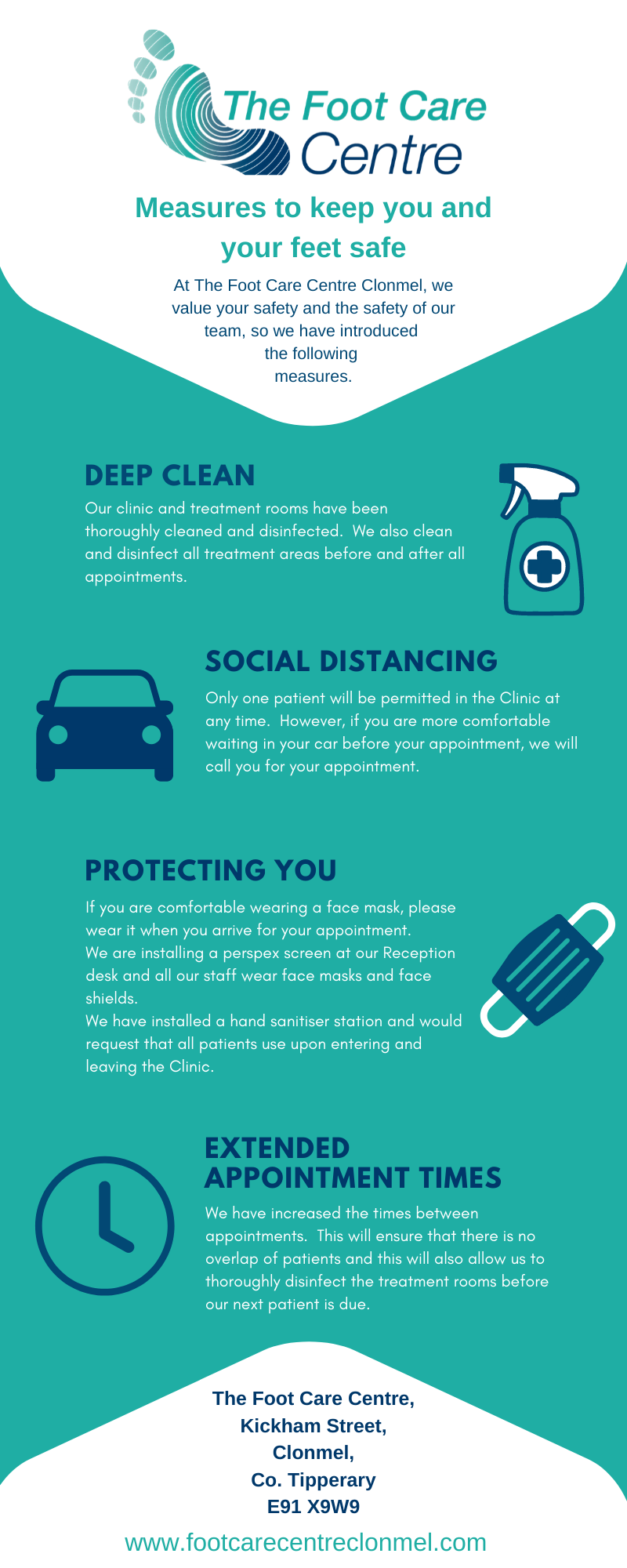
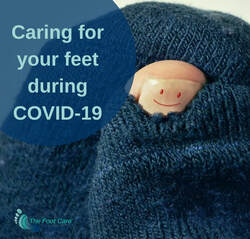
 RSS Feed
RSS Feed


